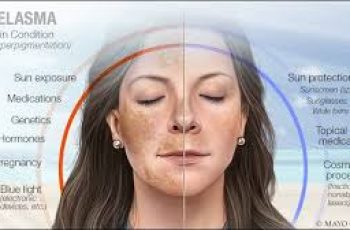
Can Retin A and Mandelic Acid Be Used Together?
I’ll be the first to admit that at times, skincare can be very confusing. Some ingredients need a team mate to perform, others should be avoided completely, and finally, others are able to deliver results flying solo, or combined with another powerhouse. So, what exactly is the situation when using retin A and mandelic acid together? This is something we plan to figure out today, but before we get round to answering your questions, we’ll have a brief recap of how each of these powerhouse ingredients work.
What is Mandelic Acid?
Derived from bitter almonds and is an alpha hydroxy acid (AHA). Often found in exfoliating products and used in professional treatments, such as chemical peels and facials.
Has a larger molecular size that is twice the size of glycolic acid and is considered gentle enough for those with a sensitive skin type to use.
The reason mandelic acid is gentle on the skin is due to how slowly it penetrates the skin and reducing the risk of irritation, redness, and severe dryness.
Works on the surface of the skin to slough away the build-up of dead skin cells, dirt, bacteria, and debris which can lead to blemishes and breakouts.
Helps to reduce the appearance of fine lines, wrinkles, and loss of elasticity by boosting the production of collagen.
Combats areas of hyperpigmentation, dark spots, and age spots leaving you with an even skin tone.
If you wanted to find out more about mandelic acid, check out our dedicated blog post.
What is Retin A?
Retin A, also known as tretinoin, is a form of vitamin A and is synthetically formulated into several effective products.
Should only be applied to the skin in the evening due to fact that any exposure to UV light will inhibit retinol from working effectively on the skin.
Needs to be introduced into your routine slowly, applying it sparingly 2 to 3 times throughout the week, alternating the evenings to avoid over-stimulation.
Reduces the appearance of fine lines, wrinkles, and other signs of ageing.
Increases the speed of the natural skin cell turnover, ridding the face of dead skin cells and bringing new, fresh cells to the surface.
Helps to boost collagen production leaving the skin plumped, firm, with a youthful bounce.
Helps the skin become thicker enabling it to be able to protect itself more effectively from free radical damage.
Find out more about retin A and how it works on the skin over on The Beauty Insiders.
Is retinol better than mandelic acid?
The answer to this is dependent on the skin results you are wanting to achieve. Retinol has gained a reputation of being one of the top performing anti-ageing ingredient. Mandelic acid is considered best to use for combating acne and blemishes, as well as hyperpigmentation. You may be surprised to hear you can actually use both ingredients in your skincare routine, but more on that later!
Another factor you need to consider is your skin type. Retinol and other forms of vitamin A are not suitable for those with a dry skin type that’s prone to sensitivity. This is when mandelic acid steps in and is favoured to use in a daily skincare routine. For other skin types, retinol will work effectively ensuring you apply it the correct way, so introducing it to the skin slowly during your evening skincare routine.
Although each ingredient works differently on the skin, because of the exfoliation and increased speed of skin cell turnover, they both increase photosensitivity so applying a daily sunscreen containing an SPF 50 is vital for ensuring your skin remains protected from further sun damage.
Can I mix mandelic acid with retinol?
Yes, you certainly can, but it takes some care to avoid overstimulating the skin. The easiest, most effective way you can use retinol and mandelic acid together, is alternating the time of day you apply them to the skin. Due to retinol’s sensitivity to UV exposure, ideally, you should use mandelic acid during your morning skincare routine. Following this with retinol during your evening routine leaves enough time for the skin pH levels to rebalance and prepare for the next steps in your regime. If this method isn’t working for your skin, or you would like to avoid using both powerhouses in the same day, you can instead alternate the evenings each active are applied.
How many times a week should you use mandelic acid?
Depending on the percentage of mandelic acid will determine how often you can use it throughout the week. Many dermatologists suggest using it only 2-3 times a week if the formulation is a serum containing 10% or more. Although there are many different products available that are enriched with the acid, from cleansers, toners, serums, and moisturisers. With different product formulas you’ll find the percentage of active level of mandelic acid can vary. What I mean by this is that cleansers often contain lower percentages making them less potent, you also rinse them from the skin meaning they are unable cause irritation.
How is mandelic acid used in routine?
This boils down to the formulation containing mandelic acid as there is a correct way of applying skincare products. The basic skincare rule is to start from the thinnest consistency to the thickest. As I have already mentioned, mandelic acid is found in an array of skincare products, so it is important to remain mindful of the product contain the active. For example, if the products are thin, such as cleanser, you must apply this to the skin before any serums or moisturisers. When you apply a thicker product first you are creating a physical barrier over the skin making it impossible for actives in thinner formulas to penetrate the skin. By layering from thinnest to thickest, you’re ensuring each active can absorb into the skin and work effectively without having to battle through.
There you have some more information about retin A and mandelic acid and how to use them together in your routine. Don’t hesitate to get in touch if you have any questions, and discover more over on our Instagram.


